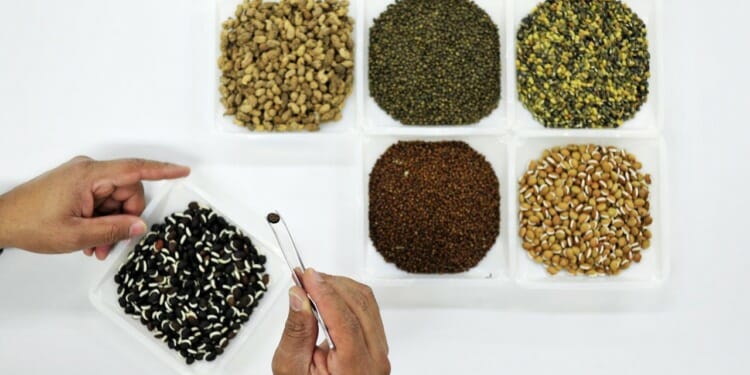Learning how to make seeds from fruits and vegetables can be fun if you are into cultivating your own produce, or they can make a great gift for a friend or family member. While the seeds you get from packets in a store may seem like they have gone through a complex process to get to you, learning how to make seeds from fruits and vegetables isn’t as hard as you might think.
General guidance
Step 1: Make sure the product you are using is an heirloom variety. These have evolved over time to cope with climate and moisture levels in the area they are grown, so they have the best chance to grow successfully.
Step 2: Choose your seeds. Pick seeds from plants that look healthy and robust. Selecting plants with certain traits will encourage those traits to be passed on to the next generation of plants.
Step 3: Plant and water!
For an overview on how to make seeds check out the video below:
If you are harvesting seeds from vegetables with fleshy fruit such as tomatoes, squash, etc. you can ferment these seeds for a few days before drying. This will help prevent certain bacteria and diseases from infecting the seeds when making seeds at home.
Specific tips for vegetables and fruit
Tomatoes and cucumber seeds: Wait for the tomatoes to fully ripen while on the vine, and scoop out pulp and seeds. Place the seeds in a jar of water for a few days in direct sunlight and swish the jar around daily. After about five days, the bad seeds and pulp should float to the top, and the good seeds should sink to the bottom.
Scrape the seeds and pulp off the top and dispose of them. The good seeds at the bottom can be rinsed and left to dry on a paper towel in a sunny spot, or somewhere less humid in the house. Then you can put them in an envelope in a cool dry place for later use.
Here is a video that goes into more detail
Pepper seeds: Wait for the pepper to fully ripen and even begin to wrinkle, then cut up the peppers to find the mass of seeds on the central stem. Brush them off the stem onto a plate or screen in the sun where the seeds can dry. Once the seeds are dry, store in a cool dry place.
Squash and pumpkin: When squashed are ripe, cut them open and remove the seeds. Hold the seeds under running water and rub them with your fingers to remove the stringy material. Place them on a plate or screen to dry. Once dry, put in an envelope and store in a cool dry place.
Peas and beans: Wait until the pods on the plant are dry and have begun to turn brown. Remove the pods from the plant and spread them on a tray or screen to dry. Leave them for at least two weeks and then shell the pods, or wait until you are ready to sow the seeds to shell them. Store in an envelope in a cool dry place.
Melons: rinse seeds under running water to remove flesh or membrane from the seeds then put them in a container and let the good seeds fall to the bottom. Scrape the bad seeds off the top and dispose of them. Rinse the good seeds again and dry them on a plate or a screen. Store in an envelope in a cool dry place.
Avocado: rinse the avocado pit underwater until you remove any remaining bits of fruit. Then find the top and the bottom of the pit. The top will be slightly more pointed and the bottom should be flatter. Then pierce the pit with three toothpicks such that when you rest the avocado in a glass, it is half-submerged in water. It’s easier if you angle the toothpicks a bit more towards the base of the pit so you don’t have to fill up a glass as much. Keep in a sunny windowsill where it can sit undisturbed for a few weeks until it sprouts. Then you are ready to plant. For more detailed information check out this article.
You can also store seeds in completely dry and washed-out pill bottles, cardboard canisters that snack foods come in, or other containers that are completely dry and can be kept in a cool dry area.
Learning how to make seeds from fruits and vegetables can be fun and also save you some money on buying seeds. They also make the perfect gift for friends and family. It can also be incredibly satisfying to grow plants from seeds you harvested and dried yourself. If you have fruits and vegetables that are starting to go bad, harvesting the seeds is a great use for them. By doing this at home with your own containers, you also reduce the environmental impact resulting from buying seeds that are grown and processed on a massive scale.
Editor’s Note: The opinions expressed here by Impakter.com contributors are their own, not those of Impakter.com. — In the Featured Photo: Assortment of seeds on a white background Photo credit: CIAT via Flickr










